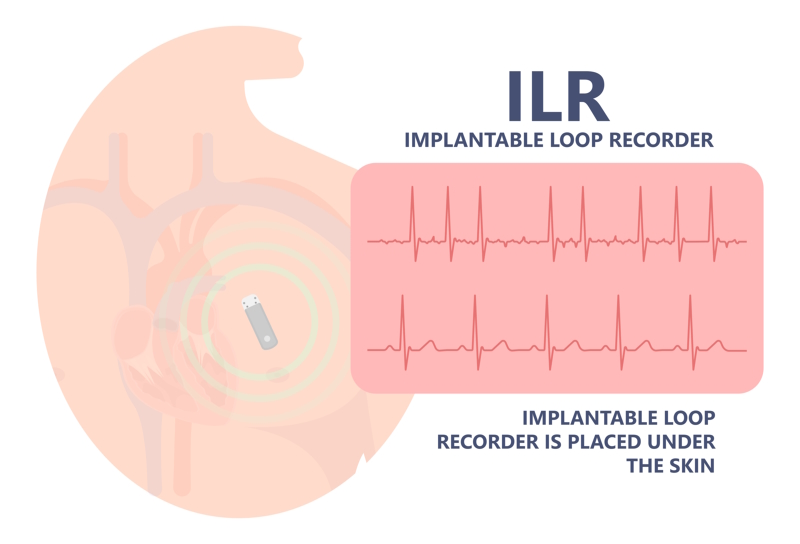Implantable Loop Recorder (ILR) | Hong Kong Asia Heart Centre
Patients may have unexplained recurrent
symptoms of dizziness, palpitation or loss of consciousness. There are many
causes, such as arrhythmias (abnormal heart rhythm). Sometimes, a definitive
diagnosis cannot be made after conventional investigations.
Implantable loop recorder (ILR) is used to
check whether the symptoms are due to arrhythmias. It is a small device
implanted usually under the skin of the left chest wall. It consists of 2
internal electrodes, through which the heart rhythm can be monitored. The
battery can last for >12 months.
Proccess:
- This invasive procedure is performed under local anesthesia in the Cardiac Catheterization & Intervention Laboratory (CCIL). You are alert during the procedure, but we may give you sedation to calm you down.
- A small incision (about 2 cm long) is made over the left chest wall.
- The ILR is inserted through the incision into the pocket underneath the skin.
- The wound will be closed with suturing material and covered with dressing.
- The procedure usually takes about 20-30 minutes.
After Procedure:
- You may be discharged from hospital on the day or 1 day after the ILR implantation.
- The wound should be covered with light dressing. Please keep the wound site clean and avoid making the dressing wet during a bath. Always change dressing if wet.
- You may need to come back to the centre for suture removal 1 week after the procedure. You may remove the dressing 2-3 days after suture removal.
- Follow your doctor’s instructions or refer to the information booklet from the ILR company to minimize the risk of electromagnetic interference. In general, strong electro-magnetic field or radiofrequency signal will interfere your ILR. Please keep a distance of >15 cm (6 inches) from an active mobile phone. Household electrical or electronic appliance usually does not affect ILR.
- Depending on the type of ILR used, you may be given a hand-held activator for recording of events. We will explain to you how to operate.
- When a cause is found using the device, we may remove the ILR and give you the appropriate treatment accordingly.
- When battery is depleted, it can be removed or replaced as decided by your doctor.
Patients may have unexplained recurrent
symptoms of dizziness, palpitation or loss of consciousness. There are many
causes, such as arrhythmias (abnormal heart rhythm). Sometimes, a definitive
diagnosis cannot be made after conventional investigations.
Implantable loop recorder (ILR) is used to
check whether the symptoms are due to arrhythmias. It is a small device
implanted usually under the skin of the left chest wall. It consists of 2
internal electrodes, through which the heart rhythm can be monitored. The
battery can last for >12 months.
Proccess:
- This invasive procedure is performed under local anesthesia in the Cardiac Catheterization & Intervention Laboratory (CCIL). You are alert during the procedure, but we may give you sedation to calm you down.
- A small incision (about 2 cm long) is made over the left chest wall.
- The ILR is inserted through the incision into the pocket underneath the skin.
- The wound will be closed with suturing material and covered with dressing.
- The procedure usually takes about 20-30 minutes.
After Procedure:
- You may be discharged from hospital on the day or 1 day after the ILR implantation.
- The wound should be covered with light dressing. Please keep the wound site clean and avoid making the dressing wet during a bath. Always change dressing if wet.
- You may need to come back to the centre for suture removal 1 week after the procedure. You may remove the dressing 2-3 days after suture removal.
- Follow your doctor’s instructions or refer to the information booklet from the ILR company to minimize the risk of electromagnetic interference. In general, strong electro-magnetic field or radiofrequency signal will interfere your ILR. Please keep a distance of >15 cm (6 inches) from an active mobile phone. Household electrical or electronic appliance usually does not affect ILR.
- Depending on the type of ILR used, you may be given a hand-held activator for recording of events. We will explain to you how to operate.
- When a cause is found using the device, we may remove the ILR and give you the appropriate treatment accordingly.
- When battery is depleted, it can be removed or replaced as decided by your doctor.


